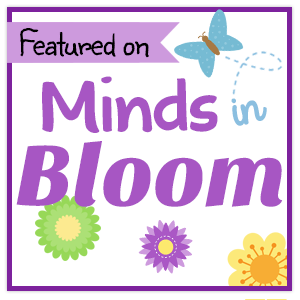Turning to a more serious topic today, teachers, that of race and cultural identity and how they affect the students in our classrooms. I know. You're colorblind, and so are your students. Yeah. Me too. While we like to say (and believe) that we don't see color when we look at our students, deep down we know that this can't possibly be true. Not really. We see gender (identified or born), hair color, height, and body type pretty easily on first glance. Why would we not notice skin tones? Of course we do. We notice, and whether we admit it or not, our brains and prior experience set us up to think and act in certain predetermined ways if we don't directly address the issue.
I began my career long ago in an inner city school. The population was ninety-five per cent African American, coming from a public housing project. Five percent of the students were children of University staff, as our school sat on the northern edge of the campus of the University of Pittsburgh in Pennsylvania. As the only caucasian face in the room, I was in for a major culture shock on the first day of school. The first day of a teaching career can be shocking all by itself, but my fifth grade classroom on Day One was quite an experience for my students and for me! It started with a sweet looking little girl who, when I asked her to please take a seat, yelled at me that she didn't have to do "nothin' but stay black and die!". And we were off...
Many years later, sitting behind this computer screen as a recently (How long will I continue to say recently - third year on the outside now!) retired teacher, I do have some thoughts about how race has been a factor in both teaching and learning throughout my career. I hope to make you squirm just a little, and think about how race is present in your classroom, and how it is addressed. Although science has proven that race doesn't exist, just a difference in levels of melanin in our skin, hair, and eyes, humans have continued to find ways to group and classify and label each other for various purposes (not always for good).
Day One of my career definitely made me squirm, think, and retool. I had arrived at work in my most teacherish (IMO) dress, heels, and pearls. (Yes pearls. Cue Donna Reed. Look her up!) That prepared me for what I thought teaching was: standing before a sea of lovely little faces, and sharing the knowledge. Ha! You know! I went home, put the pearls away, got out my flat shoes and sneakers, and invented a teacher uniform. We had no yoga pants in those days, and female teachers were not permitted to wear pants to work, sooo.... I created outfits of dresses (all my dresses at the time were mini and could easily identify as tunics) and pants worn together with flat shoes. This combination allowed me to move freely about the room, squat or sit on the floor, and forget about my appearance in general. When challenged by administration about the pants, I simply offered to remove them. (No thank you. Uh, I guess they're ok.) I began to see myself as a facilitator rather than an entertainer.
I made it my mission in those early days to do whatever it took to get close to and reach my students. Each day after school, you could find me in the projects knocking on doors and inviting myself in for a chat. (I did always try to call first, making those calls upon returning home after each day's visit.) Most parents, even those who would not come to school for conferences, invited me in, and served me tea and snacks or whatever they had to offer. Yeah, I used to be thin. Sigh.... The point is that they were for the most part welcoming and anxious to discuss their child.
As I began to understand the baggage that each child brought to my class, I found that I could reach each one and help them to learn. This certainly did not happen overnight. It was a slow and ongoing process. I did have to recognize that my students were of a cultural group different from my own, with different traditions, speech patterns, family organization, and as so many of them lived in poverty, had that also to bear as they came to school each day. I brought Black History to them throughout the year, in the form of historical leaders and examples from literature. Even as a novice teacher, it seemed important to me that children see themselves in the material that they study.
I continued my career after moving to Michigan in a private Jewish Day School, where I taught third grade secular subjects and Art to grades K-6. As a conservative Jew, teaching in an Orthodox school was again a cultural difference that I couldn't help but be aware of. I now know that males and females worship separately in Orthodox Judaism, the females often on the other side of a curtain called a mechitza. I caused quite a stir that first week when I led my class to morning prayers. The girls went behind the curtain while I was trying to get everyone in and seated. I went in after them and tried to get them to sit with their class (aka the boys). Giant embarrassment for sure! During the three years I spent in that learning environment, I absorbed so much that I didn't know about my own religion, and tried to weave those beliefs and ideas into the lessons I planned, especially in Art. We studied Jewish artists among the usual ones in every art curriculum, and created some art for each holiday celebration.
On to public school in the suburbs of Detroit for the final 28 years of my career. I went from being one of several Conservative Jewish teachers in an Orthodox Jewish school to being the only Jewish teacher in my school for most of 24 years. The only one. Asked to explain everything Jewish whenever a situation arose because we did have quite a few Jewish students in our building. What an awesome responsibility! I was not up to that, I assure you! My solution was to ask a friend who was a very observant practicing Jew. I would then share her answers. As my Jewish students were observant at about the same level as my own, we all learned something each time a question was asked.
My students in public school were diverse. Parents came to our neighborhood from far and wide for so many reasons: marriage to a family who had lived here for years, families from Japan, Korea, China, Germany, and France working in the auto industry (many for 4-6 year assignments and some for forever), military families on the move, immigrant Catholic Iraqis escaping war and persecution, Muslim families from Lebanon, Afghanistan, and even Canada, all here for reasons of their own. We had single parent families, two parent families, adoptive families, foster children, and some wards of the government. All in one class, many skin tones, many cultural backgrounds, many types of unique baggage, and many different needs. Something to embrace, not try to ignore.
During my years in this diverse and ever-changing public school classroom, I tried to give each student a sense of unique importance while still being a part of our Rainbow City classroom community. Again, this can only be achieved through getting to know the families and each child personally. What a rare pleasure that was, with memories to last a lifetime for me. I just wished Happy Birthday this morning to a grownup young woman in Japan just because I knew her delightful mother and her sister and her for just two short years. We have kept in touch. I can tell this same story over and over. My life has been enriched a thousand fold by seeing the race and culture of all my students. They are all "citizens" of Rainbow City, but all member of families, daughters and sons, sisters and brothers, and many of them now wives and husbands.
It was always part of my practice to welcome the cultures and world views of my students in their writing, discussions, reading, and celebrations throughout the year. We had a Cultural Carousel at holiday time each year, blogged about here, a "Rainbow City Cafe" community service project which included storytelling in several languages (blogged about here), and a "Coming to America" project on immigration (found here). For many years, each student published an autobiography or original story as well as contributing to a class book project. We always used student treasures.com (before and since they were a dot com!) with beautiful results!
My thoughts on race and culture in our classrooms today are that we should appreciate the race and culture of each student and share that appreciation with our class. Children learn what they see and hear. A few suggestions:
- Close your door and make your classroom a safe place to celebrate who you are - each of you. Tell your own personal stories (as you can see here, I sometimes overkill that one!), and welcome the personal stories of each of your students.
- Select literature to read for Guided Reading and Book Clubs that reflect the demographics of your class. Make sure that your students see faces that look like them in the works they study.
- Invite speakers and read-alouders from your community to your classroom. They can add so much and are almost always more than happy to be invited.
- Celebrate diverse cultural holidays whenever possible, inviting parents in to share the photos, symbols, foods, and crafts of their families' celebrations.
- Don't be afraid to open the discussion in your staff lounge of staff meetings. Ask your colleagues how they think you all are doing where race is considered in your classrooms. Ask each other how you might do better. Don't be afraid to grow. Even a tiny step is better than closing your eyes.
I have a free resource created just for you and two more resource suggestions to give you a start if you are interested:
This "Walk in the Shoes of" page will give your students a chance to learn a little more about a classmate or book character of another culture. They can add skin color, features, clothing, and accessories, and then add words/phrases telling some unique characteristics of that person's culture.
Just click on the cute blank character for your free copy!
Here is Todd Parr reading aloud his amazing book "It's OK to be Different"
https://www.facebook.com/ToddParrBooks/videos/10155036679343767/
This book is perfect for getting the conversation started with teachers/kids of any age, I think!
And from the Center for Urban Education at the University of Pittsburgh (my alma mater!), H. Richard Milner IV has written a book that just might help you to get a school or district wide PD going, or just make some small but significant changes in your own classroom.
https://www.amazon.com/Rac-ing-Class-Confronting-Classrooms/dp/1612507867
Don't miss this amazing book with practical suggestions for recognizing and appreciating the differences in your kids, and for making a better plan to serve them.
































